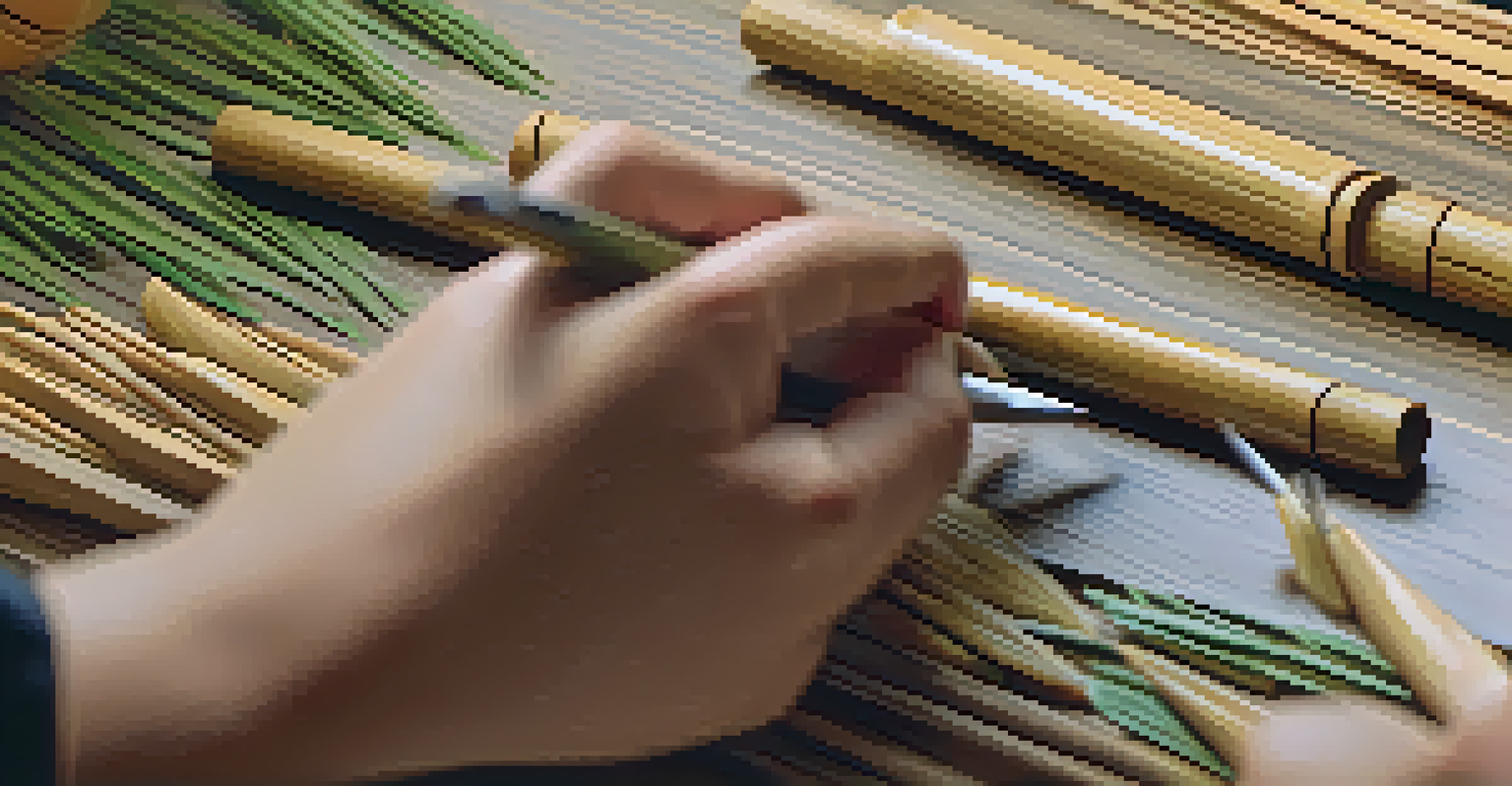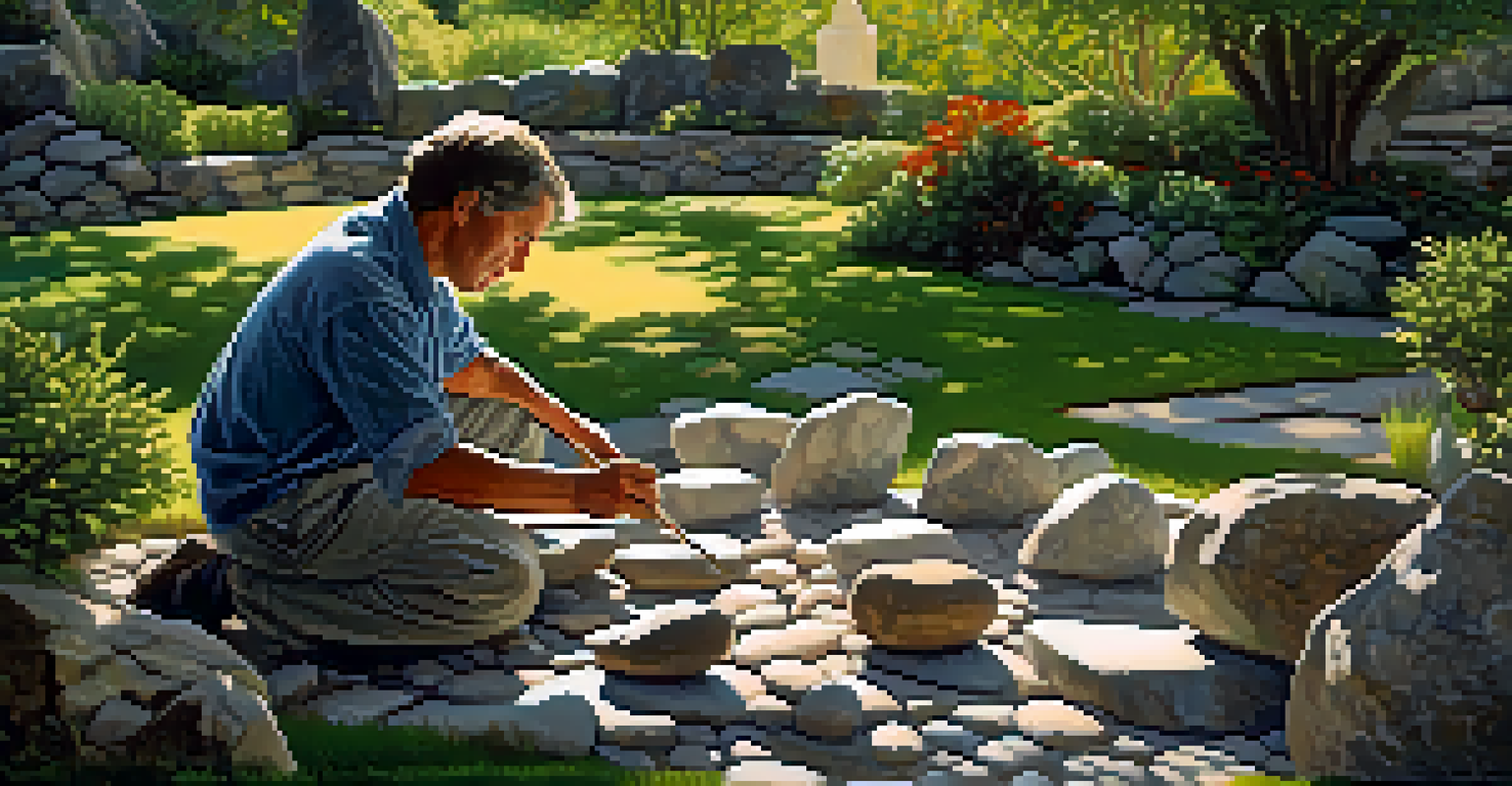Sustainable Carving: Eco-Friendly Materials for Design

Understanding Sustainable Carving and Its Importance
Sustainable carving represents a shift towards environmentally friendly design practices. It emphasizes using materials that are renewable, biodegradable, and sourced responsibly. This approach not only preserves natural resources but also minimizes waste and pollution.
The best way to predict the future is to create it.
As consumers become increasingly eco-conscious, the demand for sustainable products continues to rise. Artists and designers are responding by incorporating eco-friendly materials into their work, allowing them to create pieces that resonate with modern values. Sustainable carving fosters creativity while promoting a healthier planet.
By choosing sustainable carving methods, designers contribute to a larger movement aimed at reducing environmental impact. This practice encourages a culture of mindfulness, where every carving tells a story of respect for nature. Ultimately, sustainable carving offers a way to create beauty while caring for our world.
Exploring Eco-Friendly Wood Options for Carving
When it comes to sustainable carving, wood remains a popular choice, but not all wood is created equal. Opting for reclaimed wood, for instance, allows artists to repurpose materials that would otherwise go to waste. This not only reduces the demand for new timber but also adds character and history to the final piece.

Another excellent option is bamboo, which is technically a grass and grows rapidly, making it a renewable resource. Its lightweight nature and versatility make it ideal for intricate carvings. Additionally, bamboo's fast growth cycle ensures that it can be harvested sustainably without depleting resources.
Sustainable Carving Redefines Art
Sustainable carving emphasizes eco-friendly materials and practices, allowing artists to create beautiful pieces while caring for the environment.
Lastly, consider using certified wood from organizations like the Forest Stewardship Council (FSC). This certification guarantees that the wood was sourced responsibly, ensuring that forests are managed sustainably. Choosing certified wood supports ethical practices while providing high-quality materials for carving.
Natural Stone: A Sustainable Carving Alternative
Natural stone is another eco-friendly option that offers durability and beauty in carving. Unlike synthetic materials, which can have significant environmental footprints, natural stone is abundant and can be sustainably sourced. Many quarries now adopt practices that minimize environmental impact, making stone a more responsible choice.
We do not inherit the earth from our ancestors; we borrow it from our children.
Carving with natural stone also allows for unique textures and colors, giving artists creative freedom. Each stone type, from marble to soapstone, carries its own characteristics, adding depth and individuality to each piece. The longevity of stone carvings also means they can be cherished for generations.
Incorporating natural stone into sustainable designs not only enhances aesthetic appeal but also aligns with eco-friendly values. Artists can create stunning, timeless pieces that resonate with nature, ultimately making a statement about sustainability and craftsmanship.
Recycled and Upcycled Materials in Carving
Recycling and upcycling materials is an innovative way to practice sustainable carving. By repurposing discarded items, artists can create unique works that tell a story of transformation. This approach not only reduces waste but also challenges conventional ideas of beauty in art.
For example, reclaimed metal can be used alongside wood or stone to create mixed-media sculptures. Upcycling materials like old furniture or pallets can yield stunning carvings that reflect both creativity and environmental responsibility. Each piece becomes a testament to a sustainable mindset.
Local Sourcing Enhances Creativity
By sourcing materials locally, artists not only reduce their carbon footprint but also create unique works that reflect their surroundings.
Additionally, using recycled materials often brings a level of authenticity to the artwork. The imperfections and histories of these materials add character, allowing artists to create pieces that resonate deeply with viewers. Sustainable carving through recycling fosters a sense of community and shared responsibility for the planet.
Sustainable Paints and Finishes for Carved Pieces
Once the carving is complete, selecting sustainable paints and finishes is crucial to maintaining an eco-friendly approach. Many conventional paints contain harmful chemicals that can damage the environment. However, there are now numerous eco-friendly alternatives available that are non-toxic and biodegradable.
Natural finishes, such as oils derived from plants, not only enhance the beauty of the wood but also protect it without harmful effects. These finishes allow the natural grain to shine through while providing a safe option for both the artist and the environment. Additionally, water-based paints are also a great choice as they contain fewer volatile organic compounds (VOCs).
Choosing sustainable finishes is an essential step in the carving process. It ensures that the final product is not only beautiful but also aligns with eco-friendly values. By prioritizing sustainable paints and finishes, artists can create pieces that are truly reflective of their commitment to the planet.
The Role of Local Sourcing in Sustainable Carving
Local sourcing plays a vital role in sustainable carving practices. By purchasing materials from nearby suppliers, artists can reduce their carbon footprint significantly. This practice not only supports local economies but also fosters a sense of community within the arts.
Moreover, local sourcing often means that materials are fresher and more unique. Artists can discover regional woods or stones that reflect the character of their surroundings, allowing for a deeper connection to their work. This connection often translates into the finished piece, making it more meaningful.
Education Drives Eco-Friendly Change
Educating others about sustainable carving practices fosters a culture of environmental responsibility within the artistic community.
Additionally, working with local suppliers can lead to more environmentally friendly practices. Many small suppliers prioritize sustainability, ensuring that their materials are responsibly sourced. By choosing local options, artists can create beautiful carvings that are not only ecologically sound but also culturally rich.
Educating Others About Sustainable Carving Practices
As artists and designers embrace sustainable carving, sharing this knowledge with others becomes essential. Education plays a crucial role in raising awareness about the environmental impact of traditional carving methods and the benefits of eco-friendly alternatives. Workshops, classes, and online resources can inspire others to adopt sustainable practices in their work.
By showcasing the beauty of sustainable materials and techniques, artists can encourage a shift in mindset within the community. Sharing personal experiences and successes can motivate others to explore eco-friendly options in their own carving projects. The more individuals understand the importance of sustainability, the greater the impact on the industry as a whole.

Ultimately, educating others fosters a culture of sustainability within the arts. As more people adopt eco-friendly practices, the collective effort can lead to significant change. Sustainable carving can become a movement, transforming the industry and inspiring future generations to create with the planet in mind.